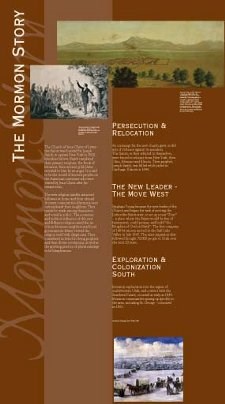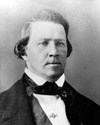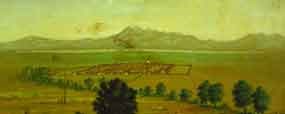
|
The Mormon Story Introduction The Church of Jesus Christ of Latter-day Saints was founded by Joseph Smith in upstate New York in 1830. Members believe Smith translated their primary scripture, the Book of Mormon, from ancient gold plates revealed to him by an angel. It is said to be the record of ancient peoples on the American continent who were visited by Jesus Christ after his resurrection. The new religion quickly attracted followers at home and from abroad. In many communities Mormons soon outnumbered their neighbors. They tended to trade among themselves, and voted as a bloc. The economic and political influence of this new and different religion raised the ire of non-Mormon neighbors and local governments. Many viewed the religion itself with skepticism. They considered its belief in living prophets and their divine revelations, as well as the growing practice of plural marriage to be blasphemous. | |
|
Persecution and Relocation As contempt for the new church grew, so did acts of violence against its members. The Saints, as they referred to themselves, were forced to relocate from New York, then Ohio, Missouri and Illinois. Their prophet, Joseph Smith, was killed while jailed in Carthage, Illinois in 1844. 
Brigham Young became the new prophet of the Church and began the task of moving the Latter-day Saints west, to set up a new "Zion" - a place where the Saints would be free of harassment, could prosper, and build "the Kingdom of God on Earth". The first company of 148 Mormons arrived in the Salt Lake Valley in July 1847. The mass-migration that followed brought 70,000 people to Utah over the next 20 years. |

Exploration and Colonization South Mormon exploration into the region of southwestern Utah, and contact with the Southern Paiute, occurred as early as 1849. Mormon communities sprang up quickly in the area, including St. George - colonized in 1861. Mormon colonization differed from the individualism of most American pioneering. Settlement parties, or "missions," comprised of skilled workers - blacksmiths, coopers, weavers, farmers, etc. - were carefully chosen. Mormons would first build a fort for protection. Even as houses were built, they were encouraged to live in close proximity, and sharethe products of their labor. | |
Last updated: March 31, 2012
